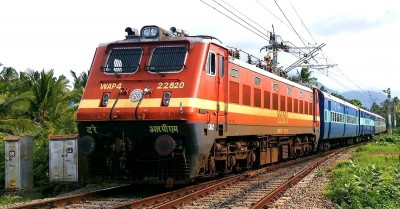
Chennai, It is not possible to reduce the speed of trains plying between Palakkad and Podanur to under 45 kmph to prevent hitting elephants, the Southern Railway has informed the Madras High Court.
The Railways also told the court that it is not possible to divert some of the trains in the Palakkad-Pollachi-Coimbatore route to prevent hitting elephants.
Recently, three elephants, including a calf, were killed after a speeding train hit them in the Walayar sector between Palakkad and Podanur. The railway officials and forest officials of Tamil Nadu were on a confrontation path following the incident.
Several elephants had lost their lives in the track during earlier days also after being hit by trains and hence the Tamil Nadu government had moved the Madras High Court to direct Railways to reduce the speed of trains at night under 45 kmph.
The counsel for the Railways, P.T Ramkumar appeared before a division bench of the court comprising Justices V. Bharathidasan and N. Sathish Kumar on Thursday and informed that at present trains in Palakkad-Podanur route is travelling at a speed of 45 kmph and it is not possible to further reduce the speed due to a gradient.
He informed the court that reducing the speed of trains below the least permissible limit may endanger the safety of passengers who are travelling, especially at night hours.
Ramkumar also said that it was not feasible or possible to divert the trains during night hours and added that there were two lines between Palakkad and Podanur via the Walayar Ghats. The 'A' line was 48.26 km long and the 'B' line was 52.56 km and both were electrified.
He said that if the trains are diverted through the alternate route from Palakkad to Podanur via Pollachi was 97.68 km long and also a single line. The Counsel for Railways said that it would take 143 more minutes of running time.
The counsel, however, told the court that the Southern Railway has established hanging solar fences and solar lights to prevent elephant deaths due to train hits.
He also said that vegetation for about 10 to 15 metres on both sides of the railway tracks was cleared for ensuring free visibility to the loco pilots.
Railway counsel also said that the railways were in consultation with private software companies for implementing the possibilities of Artificial Intelligence Early warning systems to detect elephant movement through cameras installed at multiple locations and send real-time data to a centrally monitored control room.
He added that the forest department was yet to begin construction of watchtowers at accident-prone locations.


.jpeg)

